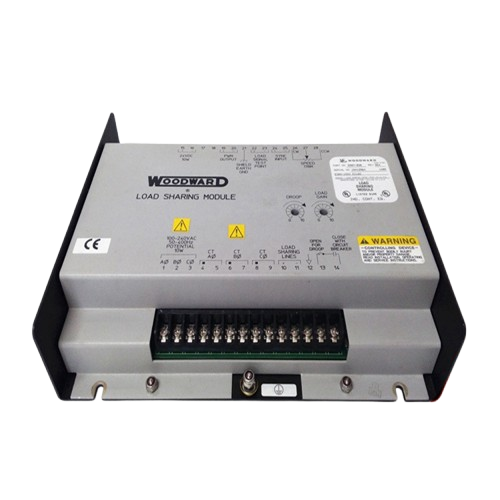
World Of Controls understands the criticality of your requirement and works towards reducing the lead time as much as possible.
5461-775 - Ambient Bias Load Sharing Module is available in stock which ships the same day.
5461-775 - Ambient Bias Load Sharing Module comes in UNUSED as well as REBUILT condition.
To avail our best deals for 5461-775 - Ambient Bias Load Sharing Module, contact us and we will get back to you within 24 hours.
SPECIFICATIONS:
Part Number: 5461-775
Manufacturer: Woodward
Product type: Ambient Bias Load Sharing Module
Power Supply: 24 VDC (±10%)
Maximum Operating Current: 12 V
Mounting: Panel or DIN rail mounting
Input Signals: 4–20 mA or ±10 VDC
Number of channels: 2
Update time: 5 milliseconds
Operating Temperature: -20°C to +70°C
Isolation Protection: 3000 VDC
Power Supply: 10 - 60 VDC
Availability: In Stock
Weight: 2 lbs
Country of Manufacture: United States
FUNCTIONAL DESCRIPTION:
5461-775 is an Ambient Bias Load Sharing Module manufactured and designed by Woodward as part of the 5400 Series used in Turbine Control Systems. It‘s a specialized device designed to optimize load distribution among multiple generators operating in parallel. It compensates for variations in ambient conditions, such as temperature or humidity, which can impact generator performance. By monitoring environmental parameters through connected sensors, the module generates bias signals to adjust load-sharing setpoints dynamically, ensuring proportional and balanced load distribution across all generators.
INSTALLATION:
OPERATION:
WOC has the largest stock of Woodward Turbine Control System Replacement Parts. We can also repair your faulty boards. We can also supply unused and rebuilt backed-up with a warranty. Our team of experts is available round the clock to support your OEM needs. Our team of experts at WOC is happy to assist you with any of your automation requirements. For pricing and availability on any parts and repairs, kindly get in touch with our team by phone or email.
What is the primary purpose of an Ambient Bias Load Sharing Module?
The module compensates for environmental variations such as temperature or humidity, ensuring accurate and proportional load sharing among generators operating in parallel. It enhances system stability and efficiency, especially in varying ambient conditions.
How does the module integrate with a generator system?
It connects to the generator’s control components, including the Automatic Voltage Regulator (AVR), governor, and load-sharing controller. The module adjusts the load-sharing setpoints based on ambient condition inputs, ensuring balanced operation.
What are the typical input signals for the module?
The inputs include signals from ambient condition sensors, such as temperature, pressure, or humidity sensors, as well as load-sharing inputs from other control devices. These signals are typically in the form of 4–20 mA or ±10 VDC.